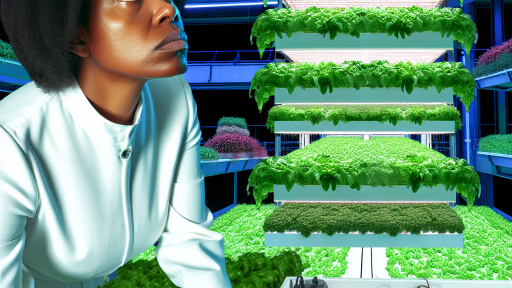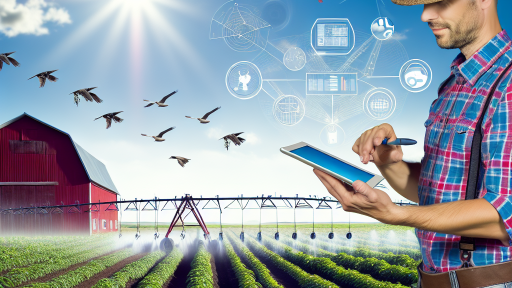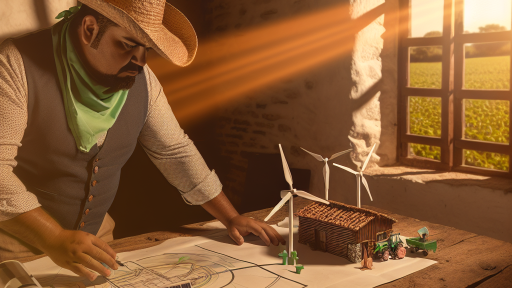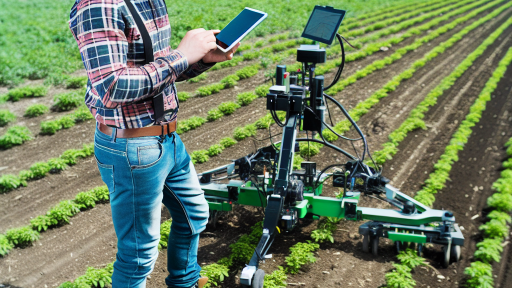Introduction to Irrigation Methods
Irrigation is essential for modern agriculture.
It involves supplying water to crops at critical times.
Different methods cater to varying environmental and economic conditions.
Understanding these methods helps farmers make informed decisions.
Definitions of Traditional and Smart Irrigation
Traditional irrigation methods have been used for centuries.
They often include flooding, furrow, and drip systems.
These systems rely mainly on human labor and natural resources.
Smart irrigation uses technology to enhance efficiency.
This approach includes sensors and automated systems.
It helps monitor moisture levels and reduces water waste.
Importance of Irrigation in Agriculture
Irrigation plays a pivotal role in crop production.
It allows for consistent food supply regardless of rainfall.
Moreover, it increases crop yields and quality.
Effective irrigation systems can save significant resources.
They support sustainable farming practices and economic growth.
Transform Your Agribusiness
Unlock your farm's potential with expert advice tailored to your needs. Get actionable steps that drive real results.
Get StartedOverview of Traditional Irrigation Methods
Basic Techniques
Traditional irrigation methods primarily involve surface irrigation techniques.
This method captures rainfall and directs it to crops.
Flood irrigation is one common technique used in many regions.
Farmers often rely on gravity to move water across fields.
Additionally, furrow irrigation involves creating small channels.
These channels help distribute water to rows of crops effectively.
Lastly, drip irrigation is also employed in some traditional practices.
Practices and Management
Water management practices are crucial in traditional irrigation.
Farmers schedule irrigation based on weather forecasts.
They monitor soil moisture to determine irrigation needs.
Also, traditional farmers often practice crop rotation.
This technique helps maintain soil health and moisture retention.
However, many still rely on outdated tools for measurement.
This often leads to inefficiencies in water usage.
Challenges Faced
Traditional irrigation techniques face several challenges today.
Water scarcity is a growing concern in many areas.
Additionally, climate change impacts rainfall patterns significantly.
This unpredictability complicates irrigation planning and execution.
Soil degradation affects the overall effectiveness of these methods.
Thus, farmers are seeking more efficient irrigation options.
Detailed Examination of Smart Irrigation Methods
Technologies and Innovations
Smart irrigation methods rely on advanced technologies to optimize water use.
One critical innovation is the use of soil moisture sensors.
These sensors monitor soil moisture levels in real time.
Users can adjust irrigation schedules based on accurate data.
Showcase Your Farming Business
Publish your professional farming services profile on our blog for a one-time fee of $200 and reach a dedicated audience of farmers and agribusiness owners.
Publish Your ProfileThis results in water conservation and healthier plants.
Another significant advancement involves weather data integration.
Smart irrigation systems use local weather forecasts to predict rainfall.
Consequently, they adjust watering schedules accordingly.
This approach reduces unnecessary irrigation and saves water.
Automation plays a vital role in smart irrigation technologies.
Automated systems can be programmed to water at specific times.
Additionally, they can be managed remotely using smartphones.
This convenience allows farmers to irrigate efficiently from anywhere.
Smart Controllers
Smart controllers form the backbone of modern irrigation systems.
They utilize algorithms to optimize water application based on various factors.
These include climate conditions and crop requirements.
Smart controllers can significantly improve water efficiency.
Some controllers also feature data logging capabilities.
This allows farmers to track water usage and system performance.
Such insights help in making informed decisions for future irrigation.
Data Analytics and Monitoring
Data analytics enhances the effectiveness of smart irrigation systems.
By analyzing collected data, farmers can identify patterns and inefficiencies.
Moreover, predictive analytics can forecast future irrigation needs.
This leads to more precise and strategic water application.
Monitoring systems equipped with real-time alerts help in maintaining efficiency.
For example, if a leak occurs, farmers receive immediate notifications.
As a result, quick remediation prevents water loss and crop damage.
Benefits of Smart Irrigation
- Conserves water by applying it more effectively.
- Enhances crop health through precise watering.
- Reduces labor costs by automating the irrigation process.
- Increases yield through improved crop management.
Smart irrigation methods represent a significant advancement over traditional practices.
They incorporate modern technologies to optimize water use.
This, in turn, promotes sustainable agricultural practices.
Discover More: Cost-Effective Sensor Solutions for Agriculture
Comparison of Water Efficiency
Traditional Irrigation Methods
Traditional irrigation methods often rely on flood or furrow techniques.
These methods distribute water over large areas indiscriminately.
As a result, significant amounts of water can be lost to evaporation and runoff.
According to agricultural experts, traditional irrigation can waste up to 50% of water.
Moreover, this inefficiency affects crop yields and soil health.
Farmers frequently face challenges in maintaining appropriate moisture levels.
Smart Irrigation Systems
Smart irrigation systems utilize advanced technology for optimal water delivery.
They integrate sensors and weather data to monitor irrigation needs closely.
This targeted approach significantly reduces water waste.
According to research, smart irrigation can save approximately 30-50% of water compared to traditional methods.
Additionally, these systems enhance crop vitality and growth consistency.
Farmers can adjust water usage based on real-time data.
Key Comparisons
When comparing traditional and smart irrigation methods, efficiency is paramount.
Showcase Your Farming Business
Publish your professional farming services profile on our blog for a one-time fee of $200 and reach a dedicated audience of farmers and agribusiness owners.
Publish Your ProfileTraditional systems often lead to excessive water use and loss.
Conversely, smart systems promote precise application and conservation.
Water management strategies play a crucial role in sustainable agriculture.
Ultimately, smart systems align better with modern environmental standards.
Choosing the right irrigation method can impact both resources and profits.
See Related Content: Maximizing Profits with Agricultural Data
Cost Analysis
Initial Investment
Traditional irrigation methods often require minimal upfront investment.
Farmers typically depend on basic equipment and human labor.
In contrast, smart irrigation systems necessitate higher initial costs.
Upgrading to smart technology involves purchasing advanced equipment and software.
However, the benefits may outweigh these costs in the long run.
Maintenance Considerations
Traditional systems usually demand regular manual checks and repairs.
These methods can lead to unforeseen expenses over time.
Smart irrigation systems are often self-regulating and remotely monitored.
This reduces the frequency of physical maintenance visits.
Nevertheless, occasional software updates and troubleshooting may incur costs.
Long-Term Savings
Smart irrigation can significantly decrease water usage, leading to lower bills.
This efficiency enhances crop yields while conserving resources.
Additionally, smart systems optimize watering schedules based on weather data.
This means less water waste when precipitation occurs.
Investing in smart technology can offer substantial long-term financial relief.
Analyzing both methods reveals a complex but beneficial landscape.
You Might Also Like: Maintenance Tips for Agricultural Automated Systems
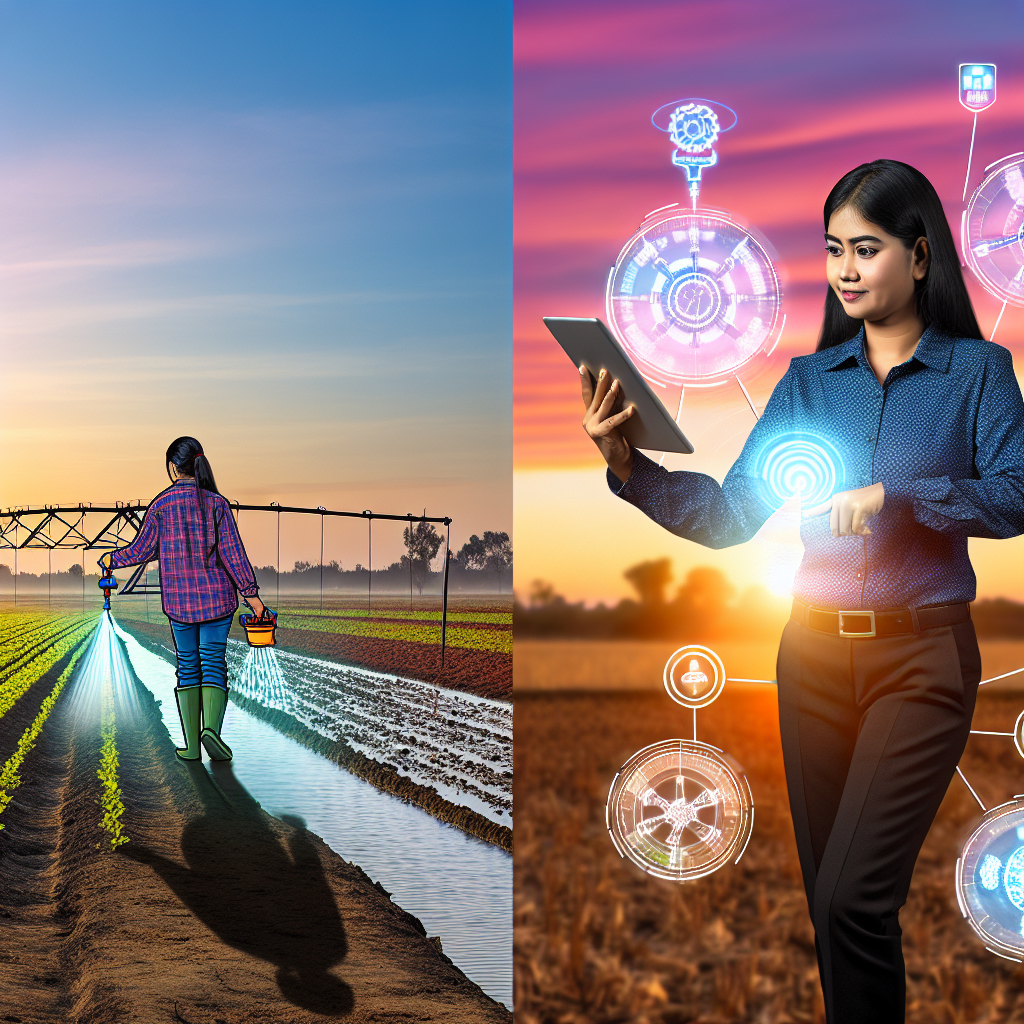
Impact on Crop Yield
Measuring Effectiveness in Different Environments
Crop yield significantly influences agricultural productivity.
Traditional irrigation methods vary in effectiveness across environments.
In areas with consistent rainfall, these methods can suffice.
However, during droughts, they often fall short.
Conversely, smart irrigation methods perform well under varied conditions.
They utilize technology to optimize water usage efficiently.
Remote monitoring systems enable farmers to react quickly to changes.
Moreover, smart systems can adjust watering schedules based on weather data.
This results in healthier crops and higher yields.
In desert regions, smart irrigation demonstrates clear advantages.
Data from farmers using these systems shows substantial yield increases.
For instance, Pablo’s farm in California reported a 30% yield boost.
This improvement highlights the importance of efficient practices.
Additionally, crop type influences the choice of irrigation method.
Some crops thrive better with controlled water delivery.
Research indicates that vegetables benefit particularly from smart systems.
Therefore, assessing the environment is crucial for choosing methods.
Showcase Your Farming Business
Publish your professional farming services profile on our blog for a one-time fee of $200 and reach a dedicated audience of farmers and agribusiness owners.
Publish Your ProfileFarmers should evaluate local conditions before making decisions.
Investigations into soil moisture levels provide vital insights.
Tech solutions grant farmers the ability to respond to these variations.
Consequently, investment in smart irrigation can enhance overall productivity.
Ultimately, understanding these dynamics will guide future irrigation strategies.
Explore Further: Boost Crop Yields with Precision Agriculture Techniques
Environmental Implications
Sustainable Practices of Traditional Irrigation
Traditional irrigation methods often rely on surface irrigation techniques.
These methods can effectively distribute water in diverse terrains.
Farmers have used techniques like flood and furrow irrigation for centuries.
However, these practices can lead to water wastage if not managed properly.
Moreover, they require significant labor and water management efforts.
Over time, traditional irrigation can contribute to soil erosion.
It can also cause salinization, affecting soil and crop health.
Nonetheless, this method supports community engagement and knowledge sharing.
Thus, traditional irrigation remains relevant in many agricultural communities.
Sustainable Practices of Smart Irrigation
Smart irrigation leverages technology to optimize water usage.
It incorporates methods like drip irrigation and smart sensors.
These technologies significantly reduce water wastage.
They allow precise control over water delivery to plants.
This approach fosters healthy plant growth while conserving resources.
Smart irrigation systems also adapt to weather conditions.
As a result, they minimize environmental impacts and help sustain ecosystems.
Furthermore, smart irrigation can improve yields and reduce costs.
It emphasizes the importance of data-driven farming practices.
Consequently, it aligns well with modern sustainable agriculture goals.
Comparative Analysis of Environmental Effects
Comparing both methods reveals their strengths and weaknesses.
Traditional irrigation often requires extensive land and water resources.
This can lead to long-term environmental degradation if mismanaged.
In contrast, smart irrigation offers efficient water utilization.
It enables farmers to use water resources sustainably and responsibly.
However, transitioning to smart systems can involve initial investment costs.
Despite this, the long-term benefits generally outweigh short-term disadvantages.
Both methods can coexist and complement each other effectively.
Ultimately, choice depends on the specific agricultural context and goals.
Future Trends in Irrigation
The Evolution of Irrigation Technology
Irrigation technology has advanced significantly in recent years.
New innovations enhance water efficiency and crop productivity.
Farmers increasingly adopt systems that incorporate real-time data.
This transition reduces waste and improves overall sustainability.
Smart Irrigation Systems
Smart irrigation utilizes sensors and IoT devices for precision watering.
These systems monitor soil moisture levels and weather patterns.
Showcase Your Farming Business
Publish your professional farming services profile on our blog for a one-time fee of $200 and reach a dedicated audience of farmers and agribusiness owners.
Publish Your ProfileAs a result, they optimize water usage based on actual needs.
This shift helps conserve water and maximizes crop yield.
Data-Driven Decision Making
Data analytics plays a crucial role in modern irrigation practices.
Farmers analyze data to make informed decisions about their fields.
Moreover, predictive models aid in anticipating irrigation needs.
This proactive approach enhances efficiency and reduces costs.
Environmental Impact and Sustainability
Smart irrigation methods significantly lessen the environmental impact.
They contribute to sustainable agricultural practices by conserving resources.
Furthermore, these systems help mitigate the effects of climate change.
As a result, farmers can maintain productivity in challenging conditions.
Future Innovations on the Horizon
The future of irrigation technology looks promising and dynamic.
Emerging technologies, such as drones and AI, will reshape practices.
These advancements will enable deeper insights into crop health.
Additionally, they will improve response times in irrigation management.
Additional Resources
New Agriculture Technology in Modern Farming
Smart irrigation technology covers “more crop per drop” | MIT …

